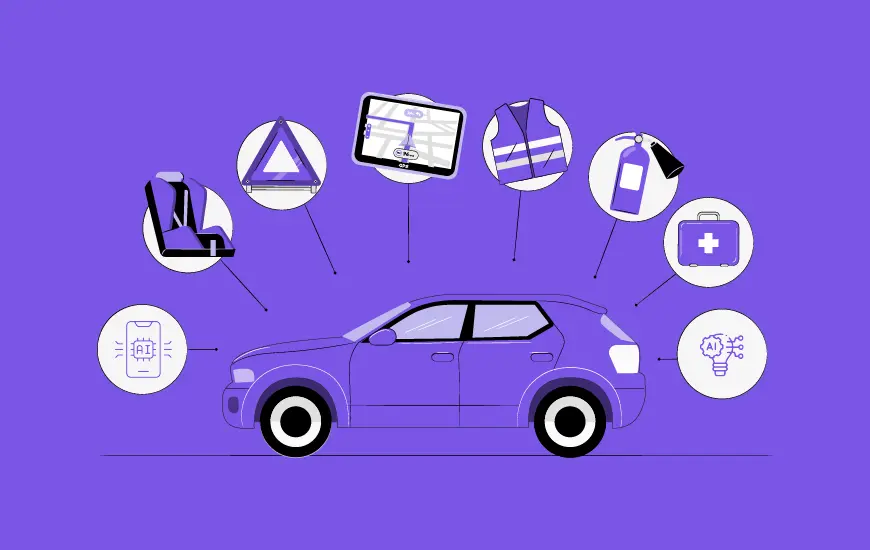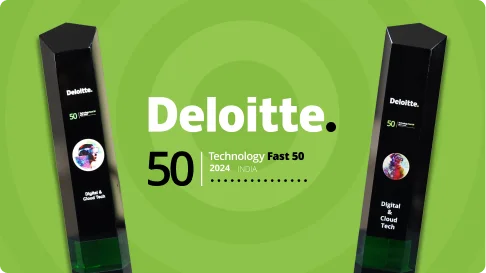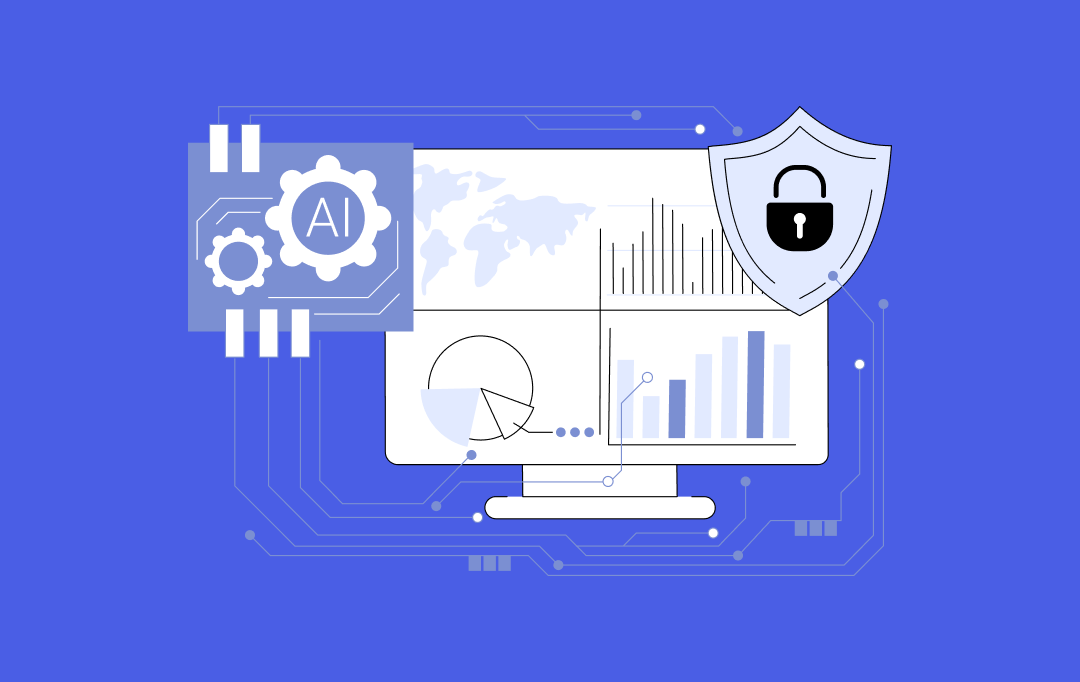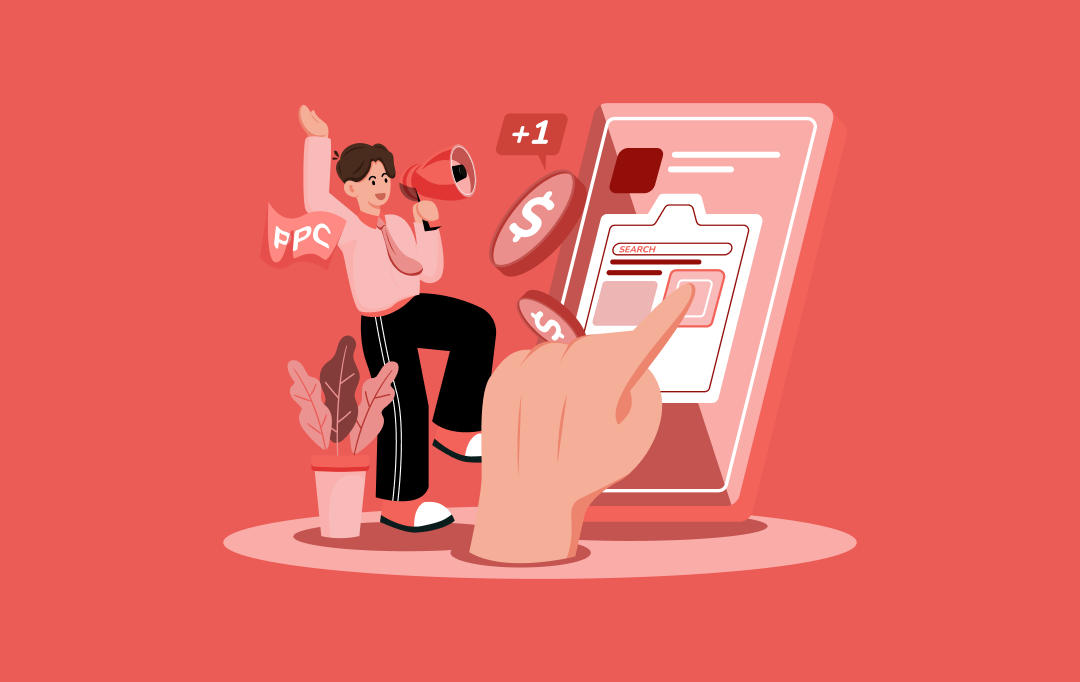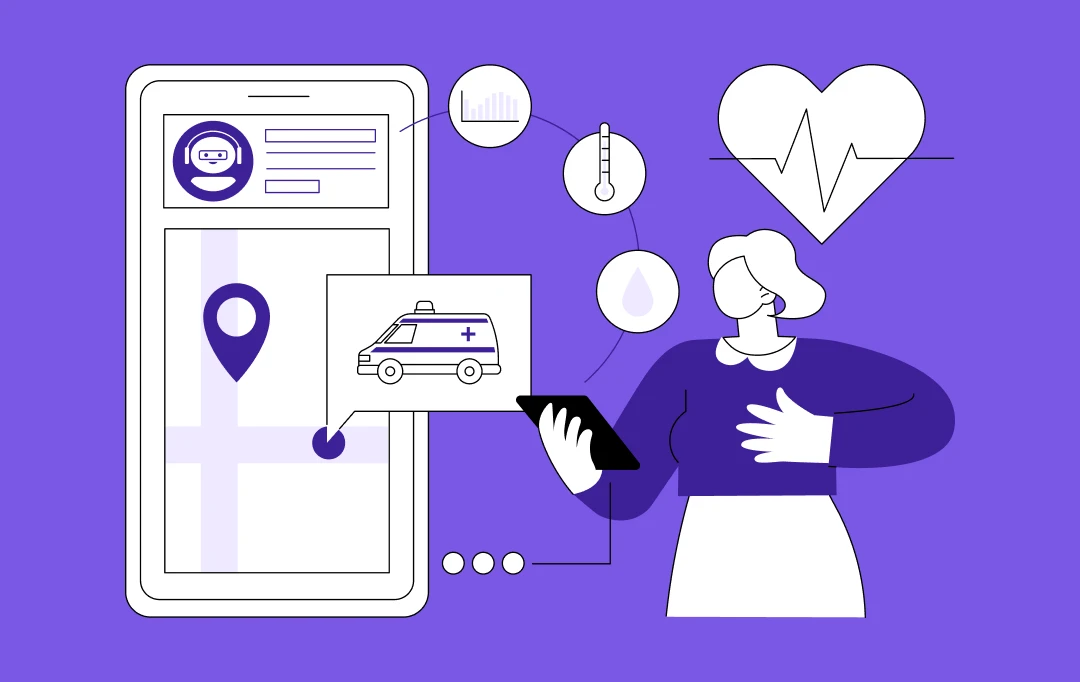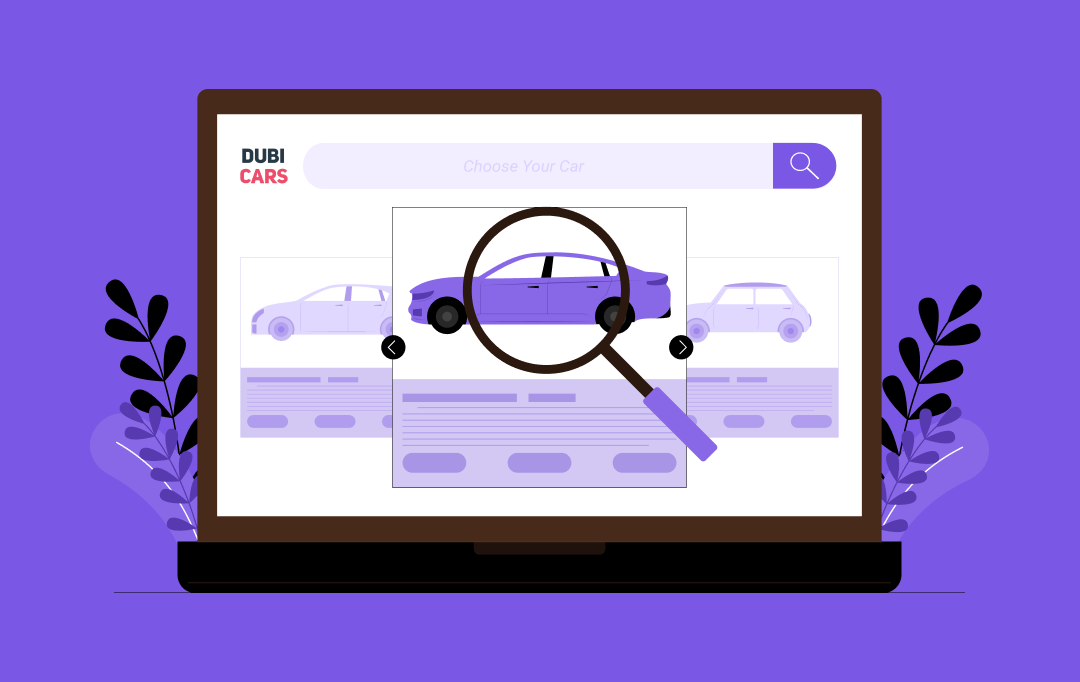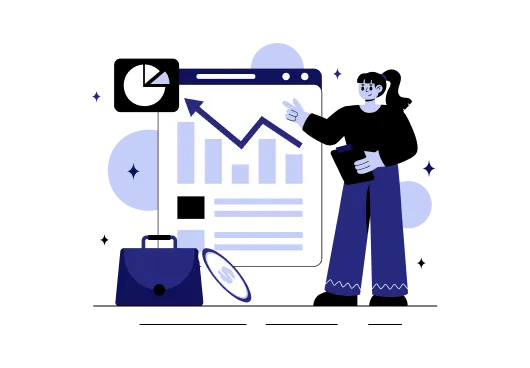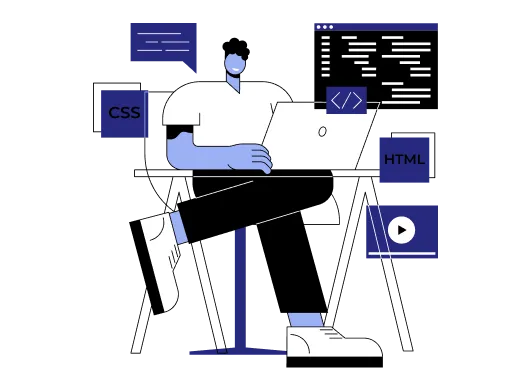- A Quick Insight into the eCommerce Market: A Gateway to Unprecedented Growth Opportunities
- Why Businesses Should Start an eCommerce Venture
- Massive Global Revenue Potential
- Shift in Consumer Behavior & Market Share
- Lower Barriers, High Leverage
- First-Mover Advantage in Emerging Markets & Niches
- Optimise for Future-Proof Growth
- Join a Proven Ecosystem of Global Growth
- Profitable eCommerce Business Ideas to Start in 2026
- 1. Sustainable Fashion Store
- 2. Smart Home Devices
- 3. Health & Wellness Products
- 4. Pet Care Products
- 5. Gourmet Food Subscriptions
- 6. Customized Beauty Products
- 7. Private Label Beauty Products
- 8. Handmade Goods
- 9. Niche Subscription Boxes
- 10. Online Learning Platforms
- 11. Specialized Children’s Toys
- 12. Online Book Store
- 13. Photography Art Store
- 14. Organic & Natural Products
- 15. Virtual Reality Experiences
- 16. Online Medicine Delivery Store
- 17. DIY Craft Kits
- 18. Fitness Equipment & Apparel
- 19. Art Supplies Subscription Box
- 20. Artisan Coffee & Tea Subscription
- 21. AI-Powered Personal Shopping Assistant
- 22. Eco-Friendly Packaging Store
- 23. AI-Driven Content Creation Tools
- 24. Smart Health Monitoring Devices
- 25. AI-Based Virtual Interior Design Platform
- How to Choose the Right eCommerce Business Idea?
- Align with Founder Strengths and Resources
- Study Market Demand, Timing, and Competition
- Check the Unit Economics
- Evaluate Compliance, Logistics, and Operations
- Use a Quick Validation Playbook
- Work with a Trusted Consulting Partner
- How to Turn Your eCommerce Idea into a Working Business
- Define Your Market and Value
- Shape the Brand and Experience
- Test Early, Improve Fast
- Build Reliable Operations
- Partner with Experts to Scale
- The Roadblocks Ahead: Common eCommerce Challenges and How to Tackle Them
- Real-World eCommerce Business Examples and Success Stories: What You Can Learn from Global Leaders
- Amazon – The Benchmark for Global eCommerce
- Alibaba – The Power of Ecosystem Thinking
- Shopify – Empowering the Builders
- Adidas – Reinventing Retail Through Digital Transformation
- Apple – Merging Experience and Commerce
- Sephora – Winning Through Data and Omnichannel Strategy
- Profitability, Scalability, And Differentiation: Your Consideration Playbook
- Run A Quick Margin And Break-Even Check
- Track CAC, LTV, And Payback The Simple Way
- Know When To Switch Models Or Add Channels
- Pull The Right Scaling Levers
- Map The Opportunity And Find Whitespace
- Build A Brand Moat: Product, Community, Or Experience
- Spin The Content, Creator, And Community Flywheel
- Price And Positioning That Stick
- A Short Consideration Checklist With A Consulting Partner
- Why Appinventiv is the Ideal Partner for Your eCommerce Dreams
- FAQs
Key takeaways:
- 2026 favors fast movers, so treat eCommerce as a primary channel and start now.
- AI is the new engine of eCommerce, powering personalization, automation, and higher conversions.
- Focus on one clear niche, validate demand quickly, and build on real customer insights.
- Track the math early, with contribution margin, LTV to CAC, and payback guiding decisions.
- Build for scale with compliant operations, dependable logistics, and an integrated tech stack.
- Learn from global leaders to combine ecosystems, great experiences, and data-driven optimization.
2026 is on the horizon and the digital marketplace isn’t just growing, it’s exploding. New brands are being born overnight, small sellers are turning into global names, and even legacy businesses are scrambling to reinvent themselves online. Every click, every swipe, every impulse buy is part of a trillion-dollar wave that shows no sign of slowing down. And here’s the truth: if your business still isn’t part of that wave, you’re already missing out. Because in this era, not being in eCommerce isn’t just playing it safe, it’s playing it small.
We’re talking about a world where people buy everything online, from their morning coffee subscription to AI-driven fitness plans and even luxury cars. The numbers don’t lie. Global eCommerce sales are projected to soar past $4.96 trillion by 2030. But it’s not just about the money. It’s about the reach. The flexibility. The ability to build something once and sell it to anyone, anywhere, at any time. Yet for many businesses, the question isn’t whether they can go online but whether they’ll survive if they don’t.
Here’s the scary part: trends that used to take years to mature now peak in months. A viral TikTok product can make or break an entire brand. Generative AI is changing how customers shop, compare, and decide. The old ways of “waiting and watching” no longer work. If you’re sitting on an idea, waiting for the “perfect moment” to enter the eCommerce space – spoiler alert – that moment was yesterday. The next best time is now.
This blog will guide you through the 20+ lucrative eCommerce business ideas for 2026. Each idea is a doorway to potential profits and market leadership, equipped with insights on tapping into consumer demands and technological trends. Let’s begin!
2026 belongs to the brands that move fast. Let’s turn your eCommerce idea into the next big success story!
A Quick Insight into the eCommerce Market: A Gateway to Unprecedented Growth Opportunities
The eCommerce market today is not just growing – it’s racing ahead of everything else in retail. Each year, a bigger chunk of shopping happens online, and that shift is now permanent. What started as convenience has turned into habit. People buy clothes, groceries, medicines, and even furniture online without thinking twice. For entrepreneurs, this means the list of eCommerce business opportunities is longer than ever.
As per Statista, eCommerce revenue in the U.S. is likely to touch $1.17 trillion by the end of 2025 and climb to around $1.54 trillion by 2030, moving at roughly 5.59% CAGR. This steady rise shows how buyers now trust online transactions more, while delivery systems and digital payments have become smoother and faster. Compared to physical stores, online business continues to grow stronger on every front – scale, reach, and profit.
Across the world, more than 4 billion people are expected to shop online by 2030, which means over half of all retail purchases will happen digitally. That’s no small signal. Whether you’re an existing brand or a new founder, this is the time to take your eCommerce business ideas seriously. The market isn’t waiting for anyone; it’s expanding every single day.
And there’s another big change shaping this growth – Artificial Intelligence. AI has quietly turned eCommerce from being just “digital” to being “intelligent.” The market for AI-powered eCommerce tools is set to touch $17 billion by 2030, while Natural Language Processing (NLP) systems used in chatbots, virtual assistants, and smart searches may cross $112 billion. By then, AI could handle nearly 80% of customer interactions, helping brands offer faster replies, better recommendations, and more personal shopping journeys. Smarter product suggestions powered by AI already show results – tripling revenue for some businesses and doubling conversion rates.
In plain words, eCommerce is heading into an AI-powered revolution. The brands that mix strong digital presence with automation and real data will lead the next decade of global commerce. If you’ve been holding an idea, this is the moment to act – because the future of shopping is already here.
Before we dive deeper into specific Ecommerce business opportunities, here are some compelling statistics that underscore why now is the ideal time to convert your eCommerce business ideas into real goals.
Why Businesses Should Start an eCommerce Venture
Here’s why stepping into the world of e-commerce business opportunities in 2026 isn’t just a good move but could be a turning point for your brand or startup. The digital marketplace is no longer a “nice to have” channel and is becoming the core of how commerce happens. The numbers back up this shift, and if you act now with one of the profitable ecommerce business ideas, you’re positioning yourself ahead of the curve.
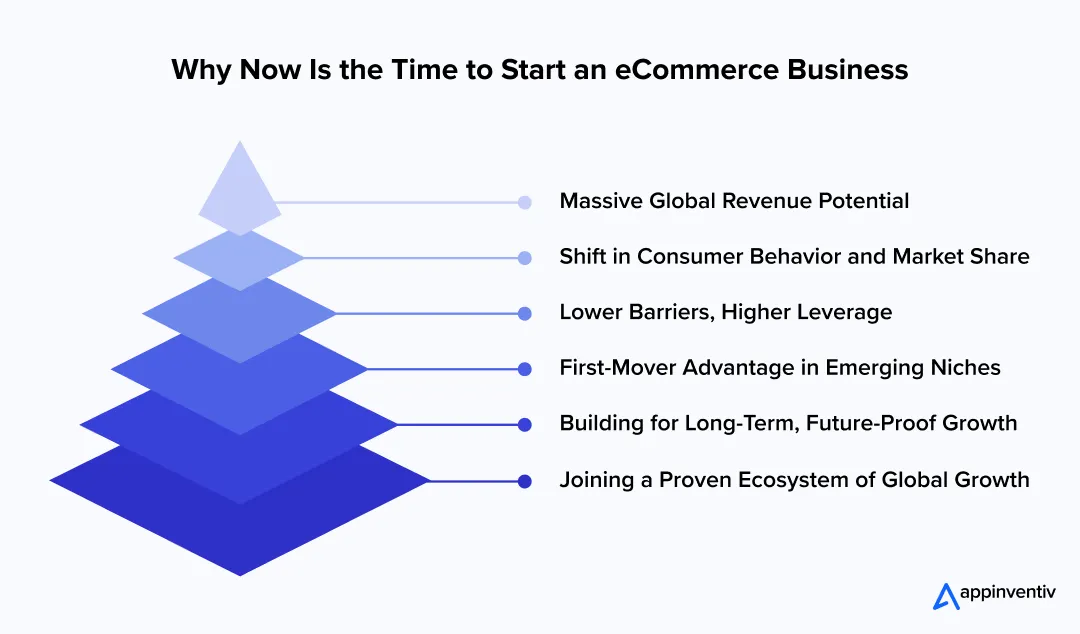
Massive Global Revenue Potential
The online market has turned into one of the biggest economic engines of our time. Global retail ecommerce sales are projected to reach trillions as discussed above. That means whether you run a niche store or a broad product line, there’s more than enough room to grow.
Shift in Consumer Behavior & Market Share
People are spending more online than ever. By the end of 2025, digital shopping will cover around 20.5% of total global retail, and that share keeps increasing. It’s not just a shift in preference – it’s a shift in habit. For any business, not being online now means letting customers go elsewhere. Strong ecommerce business models are what keep brands relevant.
Lower Barriers, High Leverage
Starting an ecommerce business no longer needs massive capital. You can launch fast, test small, and scale only when it works. Thanks to tools like AI-based merchandising, social commerce, and mobile-first selling, founders can react quickly to trends and consumer behavior. The system is flexible, data-rich, and easy to grow.
First-Mover Advantage in Emerging Markets & Niches
Plenty of spaces are still open for new entrants. Mobile commerce, cross-border ecommerce, and other niche categories are growing quickly. Picking a gap early gives you time to build trust and brand presence before the market crowds up. The first movers will always have the edge when others catch up later.
Optimise for Future-Proof Growth
A smart ecommerce business model is built around adaptability. Businesses that focus on personalization, sustainability, and direct-to-consumer selling already have an edge. The key is to build systems that evolve with customer behavior. That’s how brands stay strong through changes in market trends and technology.
Join a Proven Ecosystem of Global Growth
The numbers say it all. Amazon made $637.96 billion in revenue, $30.4 billion in net income, and has a brand value of $576.6 billion (Statista). That’s what happens when a company commits fully to digital. The opportunity is open for others too—today’s ecommerce business opportunities lie in joining that global ecosystem and scaling smart.
Profitable eCommerce Business Ideas to Start in 2026
In the rapidly expanding eCommerce landscape, identifying the right niche can set you apart and pave the way for substantial success. Here are 20+ eCommerce ideas that can help you flourish in 2026.
| Business Ideas | Audience | USP / Trends |
|---|---|---|
| Sustainable Fashion Store | Eco-conscious millennials, Gen Z | Carbon-neutral shipping, supply chain transparency |
| Smart Home Devices | Tech-savvy homeowners, Gen X | Energy-saving, privacy-focused devices |
| Health & Wellness Products | Fitness buffs, professionals | Personalized plans, mental health focus |
| Pet Care Products | Millennial & Gen Z pet owners | Sustainable packaging, pet health tech |
| Gourmet Food Subscriptions | Foodies, home chefs | Virtual cooking classes, plant-based options |
| Customized Beauty Products | Beauty enthusiasts (18–40 Age) | AI customization, eco-friendly packaging |
| Private Label Beauty Products | Entrepreneurs, bloggers | Clean beauty, niche branding |
| Handmade Goods | Authenticity seekers, gift buyers | Artisan stories, limited-edition drops |
| Niche Subscription Boxes | Hobbyists, collectors | Influencer partnerships, exclusive items |
| Online Learning Platforms | Learners, career switchers | Gamified learning, micro-credentials |
| Specialized Children’s Toys | Parents, educators | Inclusivity, sustainable materials |
| Online Book Store | Book lovers, collectors | Signed copies, indie author focus |
| Photography Art Store | Art collectors, decorators | Emerging artists, NFT tie-ins |
| Organic & Natural Products | Health-conscious families | Certifications, zero-waste packaging |
| Virtual Reality Experiences | Gamers, educators | Immersive storytelling, affordable content |
| Online Medicine Delivery Store | Urban consumers, local pharmacies | Regional coverage, hyper-local medicine delivery |
| DIY Craft Kits | Crafters, parents | Video tutorials, eco-friendly materials |
| Fitness Equipment & Apparel | Fitness buffs, remote workers | Compact designs, smart tech integration |
| Art Supplies Subscription Box | Artists, students | Project ideas, rare materials |
| Artisan Coffee & Tea Subscription | Coffee/tea lovers | Tasting notes, single-origin focus |
| AI-Powered Personal Shopping Assistant | Online retailers, digital shoppers | Predictive recommendations, intent-based personalization |
| Eco-Friendly Packaging Store | Small businesses, D2C brands | Custom recyclable packaging, low-waste solutions |
| AI-Driven Content Creation Tools | eCommerce brands, marketers | Automated SEO copy, tone-matched product listings |
| Smart Health Monitoring Devices | Health-conscious consumers, professionals | AI insights, wearable data tracking |
| AI-Based Virtual Interior Design Platform | Homeowners, real estate buyers | AR previews, AI-generated layout suggestions |
1. Sustainable Fashion Store
Here’s why this works if you’re planning your next vertical. Sustainability isn’t a side trend anymore but is shaping how people shop. This sits among the most promising segments right now because consumers are choosing purpose over price. They’re checking tags, asking about fabric origins, and trusting brands that talk about impact as much as design.

Think of it as one of those rare categories that age well. Every new collection can build storylines around recycling, ethical sourcing, or low-carbon packaging. The audience is loyal, margins grow as your credibility does, and you’re building more than a brand – you’re building trust that compounds every season.
2. Smart Home Devices
Smart living has quietly turned into a habit, not a luxury. Homes are getting smarter, people want control from their phones, and they’ll happily pay a premium for reliability.

What makes this one of the promising ecommerce ideas is the repeat purchase loop – once someone starts automating, they keep upgrading. Offer honest reviews, setup support, maybe bundled deals with voice assistants and you’ve got a niche that keeps evolving with tech, not against it.
3. Health & Wellness Products
Health has become a daily subscription in itself and that’s why this sits high on any list of thriving categories. From gut-friendly snacks to posture correction devices, consumers are actively searching for what keeps them balanced and sane.
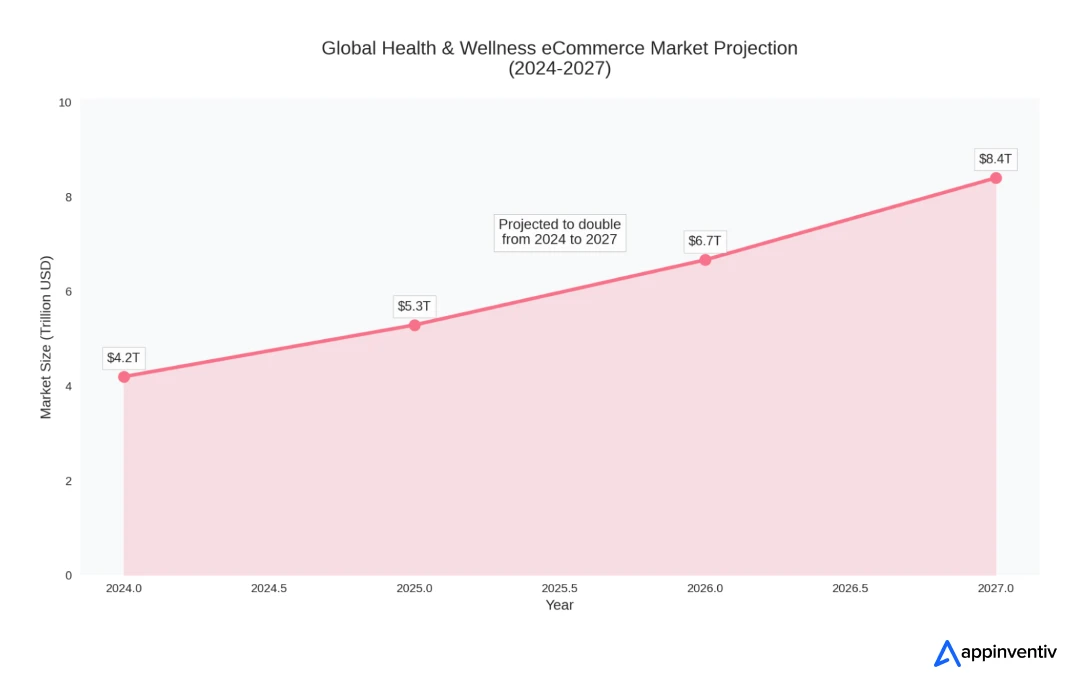
This is one of those markets where consistency matters more than novelty. You’re not chasing fads; you’re building routines. Pair credible sourcing with plain-spoken education – what works, what doesn’t and your customers will trust your advice as much as your store.
4. Pet Care Products
You’ll rarely see a customer more loyal than a pet parent, which makes this one of the easiest yet most rewarding segments to step into. Pet spending is recession-proof; people skip their own luxuries before they skip their dog’s treats.
The opportunity here isn’t about competing with giants but about community. Build content that feels personal, show real pets using your products, and answer small everyday problems. When you do that, you’re not just selling, you’re becoming part of the family.
5. Gourmet Food Subscriptions
This one plays beautifully between indulgence and routine. Gourmet food boxes remain a clever niche because they let customers experience luxury without effort. A new flavor every month, a chef-curated mix, something to share at the table – it’s simple and addictive.
It’s also a quiet goldmine if you manage logistics right. Subscription models mean recurring revenue; storytelling keeps customers emotionally tied to the box. It’s not just about food but about anticipation, and that’s what makes it stick.
6. Customized Beauty Products
Here’s why this vertical stands out. The beauty market is noisy, but personalization cuts through it. Building a brand around customized skincare or makeup is profitable because people love products that feel designed for them. From shade matchers to ingredient quizzes, you’re turning data into beauty and that personalization keeps customers hooked.
It’s one of those profitable eCommerce business ideas where the margins and loyalty go hand in hand. When customers trust your formula, they reorder without hesitation. Layer it with transparency; talk about the science, the process, even the failure stories and you’ll see conversion rates that regular cosmetic stores can’t touch.

7. Private Label Beauty Products
Private labeling gives you the power of ownership without the production headaches. You can focus entirely on branding and positioning while your manufacturing stays white-label. The demand for locally made, cruelty-free beauty is climbing and customers don’t care who made it, they care whose name they remember.
This model gives you flexibility, allowing you to test markets fast, tweak formulas, and rebrand without heavy sunk costs. The play here is storytelling. Make your label feel like a movement, not just another product line, and you’ll see the difference in lifetime value.
8. Handmade Goods
There’s something people still crave in a digital world – authenticity. Customers buy handmade because they buy the maker’s story – they want imperfections, not mass production. Each product becomes a conversation piece, not just a purchase.
This is one of the ecommerce ideas that has open opportunities across home decor, jewelry, and sustainable gifting. It scales slower, but it builds deeper roots. Once customers connect to the human side behind your craft, they don’t switch but follow.
9. Niche Subscription Boxes
Curation is the new convenience. Subscription boxes built around narrow interests – skincare for travelers, plant lovers, or fitness addicts – are among the fastest-growing concepts right now. Customers pay for surprises, not just stuff.
This model is built on rhythm and personalization. Keep your boxes fresh, themed, and experiential. Build a community around discovery, use content to tease what’s coming next, and you’ll have a brand that sells emotion, not inventory.
10. Online Learning Platforms
Learning has shifted from lecture halls to browser tabs, which makes this one of the sharpest ecommerce startup ideas for 2026. People want to upskill fast with short courses, certifications, mentorships and they’re willing to pay if the value feels practical.
Example: Dr. Reddy’s E-Learning Platform
Dr. Reddy’s Foundation, a non-profit organization dedicated to empowering communities through health, education, skill development, and climate action, sought to enhance educational access for economically disadvantaged groups.
Dr. Reddy’s Foundation approached Appinventiv to develop an inclusive Dr. Reddy’s eLearning platform for underprivileged students, especially those with visual and hearing impairments. The collaboration resulted in the creation of both web and mobile applications featuring:
- Impairment modes
- Dynamic theme colors
- Sign language support
- A unique course creation functionality
- Video recording and editing tools
- A robust admin panel
Results:
The mobile application achieved over 5,000 downloads within the first two months of launch, underscoring its impact and success.
It’s also one of the most legit directions because the cost of delivery stays low while the reach keeps growing. Add interactive sessions, AI tutors, or real-world project tie-ins and you’re not just selling education; you’re selling transformation.
11. Specialized Children’s Toys
Parents don’t just buy toys anymore but invest in learning experiences. STEM kits, wooden puzzles, or sensory play items that build skills are all seeing steady global growth.
The opportunity here lies in the parent’s psychology – safety, development, and trust. If you design toys that look fun but teach quietly in the background, you’ll own a category that keeps renewing every generation.
12. Online Book Store
Books have a way of staying relevant, even when every other product goes digital. That’s why an online bookstore focused on niche genres or self-published authors still works beautifully. Curate what big platforms overlook – regional stories, translated literature, academic collections.
This is one of those ideas that grow by community. Add book clubs, author sessions, or early access previews and let your brand feel like a reading space, not a transaction page.
13. Photography Art Store
Visual art is shifting online faster than galleries can keep up, making this one of the best categories for creators. Sell prints, limited editions, or even digital licenses for décor and design agencies.
It’s a high-value niche where credibility matters. Invest in quality visuals, framing guides, and certificates of authenticity. This will make your store feel premium, and collectors will follow.
14. Organic & Natural Products
Clean living is no longer a niche; it’s mainstream. Selling natural and organic goods, from skincare to superfoods, sits high among the best ideas to grow. Customers are tired of chemical-heavy brands and actively seek products they can understand.
The opportunity here lies in clarity. Show your ingredients, talk about sourcing, share farmer stories. When you do that, your product stops being another SKU – it becomes trust on a shelf.
15. Virtual Reality Experiences
The next wave of entertainment is immersive. Building a VR experience store, from headsets to virtual tours, is quickly turning into one of the most dynamic eCommerce startup ideas. With gaming, travel, and education blending into one experience, demand is expanding across demographics.
It’s a futuristic play where you are not just selling hardware but selling experiences. Partner with creators, develop bundled offerings, and position your brand at the intersection of imagination and tech.
16. Online Medicine Delivery Store
Convenience meets necessity here. An online medicine platform is an amazing opportunity to invest in because health doesn’t pause. When you deliver reliability, verified prescriptions, and quick service, customers don’t compare prices but stay.
It is one of the eCommerce business ideas that thrives on accuracy and compliance. Build secure systems, ensure doctor partnerships, and make privacy part of your brand promise. It’s one of the few categories where consistency is reputation.
17. DIY Craft Kits
Creativity sells when people can touch it. DIY kits for candles, resin art, embroidery and more remain popular globally. They’re fun, repeatable, and make people feel accomplished.
The opportunity here is light on overheads but big on experience. Focus on presentation, easy tutorials, and quality materials. You’re not just selling crafts – you’re selling time well spent.
18. Fitness Equipment & Apparel
The wellness wave keeps getting stronger. Fitness gear and smart apparel continue to top lists of great ventures because the health mindset isn’t slowing down. Whether it’s resistance bands or connected wearables, people are investing in themselves.
The idea also pairs beautifully with influencer ecosystems. Build a brand that’s equal parts motivation and utility – and you’ll never struggle with retention.
19. Art Supplies Subscription Box
Artists love discovery and that’s why this sits high among modern creative ventures. A monthly box with curated tools, brushes, and papers keeps the creative community engaged.
This opportunity is built on inspiration. Send samples, host virtual workshops, feature user art – your brand becomes part of their process, not just their purchase.
20. Artisan Coffee & Tea Subscription
Caffeine culture never fades; it evolves. That’s why specialty brews and blends still rank among the strongest lifestyle concepts worldwide. Subscribers crave discovery and want to taste stories, not just beans.
This approach wins with authenticity. Partner with local roasters, share origin tales, include tasting notes – you’ll have customers who stay for the ritual, not the product.
21. AI-Powered Personal Shopping Assistant
Personalization at scale and that’s where retail is heading. Building an AI shopping companion is one of the smartest innovations to explore in 2026. It recommends, compares, and remembers preferences better than any human assistant.
This is a profitable venture because it adds real utility to every online store. Integrate it with major platforms, license it to retailers, and you’re solving a universal customer pain point – choice fatigue.
22. Eco-Friendly Packaging Store
Every brand, from small sellers to large enterprises, needs this. Launching a packaging brand built on biodegradable or recycled materials is one of the most practical ideas today. Sustainability isn’t optional anymore; it’s compliance.
This gives you access to B2B and D2C customers alike. The opportunity isn’t just in selling boxes but in designing smarter ones that ship safely and leave zero guilt behind.
23. AI-Driven Content Creation Tools
When it comes to exploring business opportunities in ecommerce, AI-driven content creation tools tops the list. The demand for faster, smarter content is unstoppable, making this one of the most lucrative creative ventures to enter into. Writers, marketers, and designers want automation that doesn’t feel robotic.
It’s a forward-looking direction if you offer flexible plans and creative add-ons. Blend AI efficiency with human oversight – let your users co-create instead of just generate.
24. Smart Health Monitoring Devices
Preventive healthcare is where the real growth lies. Smart devices that track vitals or habits are now essentials, making this one of the strongest tech-meets-health plays of the decade.
This opportunity connects directly to peace of mind – parents, seniors, fitness enthusiasts. Position your brand as the bridge between data and wellbeing, not just another gadget seller.
25. AI-Based Virtual Interior Design Platform
Design meets intelligence here. An AI platform that visualizes interiors before purchase stands out as a futuristic idea for next-gen consumers. Customers can see, edit, and order – all in one immersive session.
It is one of the legit eCommerce business ideas that removes guesswork, reduces returns, and turns inspiration into instant conversion. You can call it experiential retail at its smartest.
It’s time to stop planning and start scaling. Partner with Appinventiv to turn your eCommerce vision into a brand that drives sales, growth, and real market impact.
How to Choose the Right eCommerce Business Idea?
Picking the right ecommerce business idea isn’t about trends. It’s about you; what you know, what you can manage, and how much risk you’re ready to take. The best online ventures grow from a mix of skill, timing, and a market that actually wants what you plan to sell. You don’t need to overthink it. You just need a clear starting point and the discipline to test fast.

Align with Founder Strengths and Resources
Start where you already have an edge. Maybe you’ve worked in fashion, or maybe you just understand what makes pet owners buy again. That’s your base. Most successful ecommerce startup ideas come from people who solve a problem they already have.
Look at what’s around you – contacts, savings, suppliers, even time. If you’re short on funds, pick a model that doesn’t demand heavy inventory or storage. Dropshipping, small-batch handmade goods, or digital downloads fit that path. The right idea is one you can actually run, not one that sounds impressive on paper.
Study Market Demand, Timing, and Competition
Once you’ve got a few ideas, check if people truly care. Use simple tools like Google Trends, Amazon search bars, or Reddit threads. If nobody’s talking about it, that’s a red flag. But if everyone’s selling it, you’ll need a fresh spin.
Good timing matters too. Selling winter gear in March won’t work, but launching sustainable travel accessories right before summer might. Pay attention to how fast a category grows and how deep big players already go. The sweet spot lies in demand that’s rising but not yet overcrowded. That’s where real ecommerce business opportunities hide.
Check the Unit Economics
Numbers don’t lie. Before you call something one of the most profitable ecommerce business ideas, see what’s left after costs. Subtract the real stuff like product, packaging, ads, platform fees, shipping, and returns.
If you’re barely breaking even, tweak the product or raise your price. Better yet, find something that buyers will come back for. Refill packs, seasonal drops, or membership models all build repeat business. A simple rule: if you make your money back in two or three customer orders, you’re on the right track.
Evaluate Compliance, Logistics, and Operations
This is where many first-time founders get stuck. It’s not just selling but storing, packing, shipping, and dealing with rules. Health products, toys, and food all need extra checks and certificates. Digital goods have fewer hurdles but still require clear privacy and data policies.
Start local, ship small, and use tested logistics partners before scaling. The goal isn’t perfection, it’s momentum. Once your flow is smooth, you can start worrying about fancy features or a bigger supply chain.
Use a Quick Validation Playbook
Now comes the part that separates dreamers from builders. Don’t write a 40-page business plan. Test the idea in real life.
Create a single landing page. Add two good photos, a short pitch, and a button for early access. Run a small ad and see who signs up. Or sell ten pieces manually through Instagram DMs. If people buy, you’ve got proof. If not, you’ve got feedback.
Keep tweaking. Sometimes the product works but the message doesn’t. Sometimes the message clicks but the pricing feels off. Validation is where ecommerce business ideas stop being theory and start turning into real ecommerce business models.
Work with a Trusted Consulting Partner
If you’re serious about scaling fast, teaming up with an experienced consulting provider can save you months of trial and error. A company like Appinventiv helps founders test ideas, validate product-market fit, and design ecommerce platforms that actually convert. We bring strategy, design, and development under one roof, so you can focus on building your brand instead of juggling tech.
It’s not about outsourcing vision; it’s about speeding up execution with people who’ve already done it successfully for hundreds of startups and enterprises.
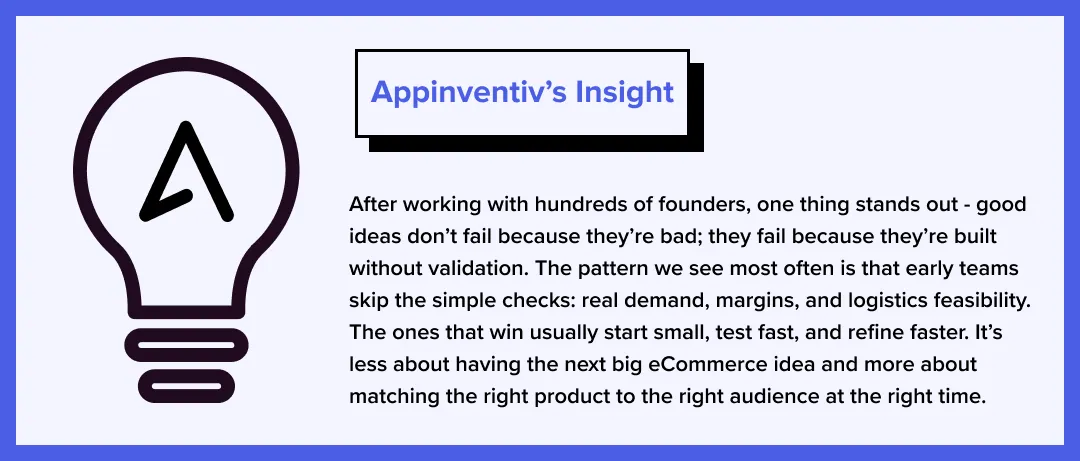
How to Turn Your eCommerce Idea into a Working Business
Once you’ve picked the ecommerce business idea that fits you, the next step is simple – make it real. This is where your plan shifts from brainstorming to building. You already know what you want to sell, now it’s about who you’re selling to, how you’ll reach them, and what systems will keep it running smoothly. Let’s look into the ultimate guideline on how to start ecommerce business:
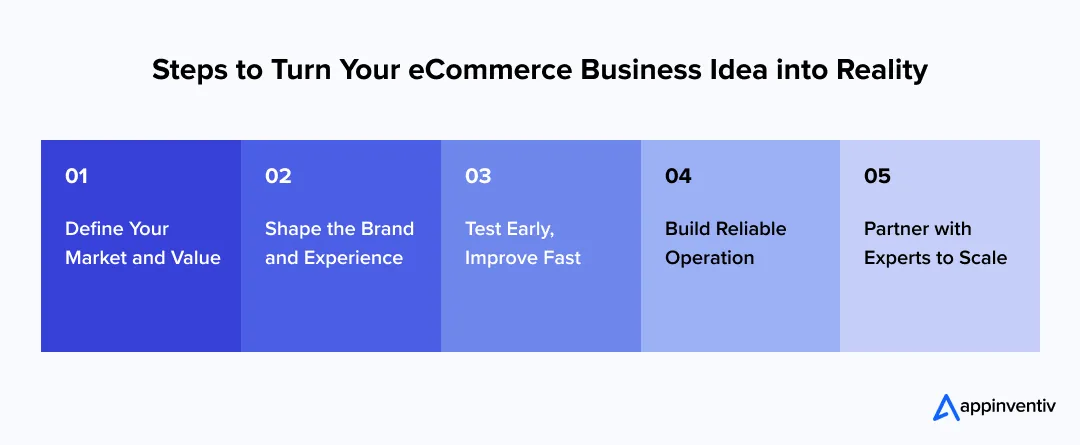
Define Your Market and Value
You can’t sell to everyone. Choose one clear customer group and understand what makes them click “buy.” Look at how they shop, what they trust, and what frustrates them in existing stores. Build your message around that.
Your value proposition isn’t just about price or looks but about what they get that others don’t. A focused message backed by real customer insight is what separates successful ecommerce startups from those that fade out.
Shape the Brand and Experience
Now build a brand that feels human. The logo, tone, packaging, and store layout should all tell the same story. Whether you’re launching a boutique fashion label or a pet care line, keep your ecommerce business model simple – one that feels easy to run and easy to buy from.
Remember: customers don’t just buy the product; they buy how it makes them feel. Every detail adds up to trust.
Test Early, Improve Fast
Even if you’ve already chosen your idea, testing never stops. Try different versions of product photos, prices, and ads. Use small marketing spends to see which audience responds best. If something isn’t working, fix it fast. The best ecommerce business opportunities come from listening to data and acting on it before the competition does.
Build Reliable Operations
Behind every smooth online experience is a clear system. Sort your suppliers, delivery timelines, and payment partners before you scale. Make sure compliance is handled from day one.
Choose logistics partners who can grow with you and software that connects sales, inventory, and marketing in one place. A solid back-end keeps your business stable when orders start increasing.
Partner with Experts to Scale
At this stage, working with an experienced development partner can make a real difference. We can help new founders refine their ecommerce business model, design customer journeys that convert, and build apps or platforms that perform at scale. We’ve seen what works and what doesn’t across hundreds of ecommerce startups.
Having that kind of support turns your learning curve into a launchpad. You stay focused on growth while the tech, design, and integration run smoothly behind the scenes.
The Roadblocks Ahead: Common eCommerce Challenges and How to Tackle Them
Even the best ecommerce business ideas hit a few bumps once you move from planning to execution. From rising ad costs to AI bias in automation, today’s founders face a market that rewards speed but punishes mistakes fast. The good part? Most of these challenges are predictable and solvable, if you know where to look early on.
Below is a complete table that breaks down ecommerce business challenges & their solutions:
| Challenge | Impact on Business | How to Overcome It |
|---|---|---|
| High Competition and Market Saturation | Makes it harder for new ecommerce startups to get visibility and win customer trust. | Focus on niche products, strong branding, and storytelling. Use SEO, content marketing, and influencer collaborations to stand out. |
| Customer Acquisition Costs (CAC) Rising | Ads are expensive, and new brands often overspend trying to reach the wrong audience. | Build organic traffic through blogs, social media, and community marketing. Retarget past visitors and focus on customer retention to lower CAC over time. |
| Poor User Experience (UX) | Leads to low conversion rates and high cart abandonment. | Simplify navigation, speed up site loading, and ensure a mobile-first design. Test your ecommerce website or app frequently for usability issues. |
| Inventory and Supply Chain Management | Overstocking drains cash, understocking loses sales. | Use inventory management tools and demand forecasting powered by AI. Keep close contact with suppliers and automate reorder alerts. |
| Payment Gateway Failures or Limited Options | Customers drop off when their preferred payment method isn’t supported. | Integrate multiple trusted payment gateways (Stripe, PayPal, UPI, etc.) and ensure secure, fast checkout. |
| Shipping Delays and Returns | Damages customer trust and leads to negative reviews. | Partner with reliable logistics companies. Offer real-time tracking, clear return policies, and transparent delivery timelines. |
| Data Privacy and Cybersecurity Risks | Compromised data can lead to loss of reputation and legal trouble. | Implement SSL encryption, two-factor authentication, and regular security audits. Stay compliant with GDPR, CCPA, and other data laws. |
| Inconsistent Brand Identity | Confuses potential buyers and weakens customer loyalty. | Maintain brand consistency across product packaging, social media, and website. Create brand guidelines to ensure uniform tone and visuals. |
| Scaling Infrastructure | As orders grow, systems can crash or slow down. | Choose a cloud-based ecommerce platform that scales easily. Use load balancing and caching to maintain uptime during traffic spikes. |
| Poor Product Descriptions or Visuals | Leads to fewer sales and high return rates. | Use detailed, honest product copy and high-quality visuals. Add 360° views or AR tools to help users experience products virtually. |
| Low Repeat Purchases | Forces the business to rely heavily on new customers instead of retaining old ones. | Introduce loyalty programs, subscription options, and personalized product recommendations to keep customers engaged. |
| Managing Returns and Refunds | Complicates operations and hurts profit margins. | Automate return processing with clear policies. Offer instant store credits or exchange options to retain customers. |
| Compliance with Global Regulations | Different countries have different tax, shipping, and labeling laws. | Use automated tax and compliance tools. Work with legal experts to stay updated on ecommerce policies across markets. |
| Integration of AI and Automation | Poorly implemented AI tools can make recommendations irrelevant or robotic. | Train AI systems with real user data. Combine automation with human oversight for customer-facing processes. |
| AI Bias in Personalization Engines | Skewed data can lead to inaccurate recommendations or exclusion of certain customer groups. | Regularly audit AI algorithms for fairness and inclusivity. Collect diverse datasets to train recommendation engines. |
| AI Hallucinations or Inaccurate Chatbot Responses | Can frustrate customers or misinform them about products or policies. | Keep chatbots supervised by human agents and update training data regularly. Monitor customer interactions for quality control. |
| Complex Taxation and Accounting | Leads to confusion during cross-border sales. | Use accounting software designed for ecommerce. Automate invoicing, currency conversion, and compliance filing. |
| Technology Upgrades and Maintenance | Outdated plugins or tech stacks cause slowdowns or vulnerabilities. | Keep software and CMS updated. Schedule regular maintenance and security checks with your development partner. |
| Poor Analytics and Reporting | Without clear data, you can’t track what’s working. | Use analytics tools like Google Analytics, Shopify Insights, or Power BI to monitor performance and customer behavior. |
| Lack of Customer Trust | Especially tough for new ecommerce businesses. | Add social proof through verified reviews, testimonials, and secure payment icons. Build credibility through transparent policies and branding. |
| Sustainability Pressure | Customers now expect eco-friendly packaging and responsible sourcing. | Partner with suppliers who follow ethical standards. Use recyclable materials and communicate sustainability efforts clearly. |
Real-World eCommerce Business Examples and Success Stories: What You Can Learn from Global Leaders
If you want to know what works in ecommerce, look at those who’ve already redefined it. The world’s biggest brands didn’t just move online but built ecosystems that changed how billions of people shop. Each of these companies proves that with the right ecommerce business model, data strategy, and customer focus, scale and loyalty can grow side by side.
Here are six global ecommerce business examples that show what smart execution looks like and what you can learn from them before you build your own ecommerce business.
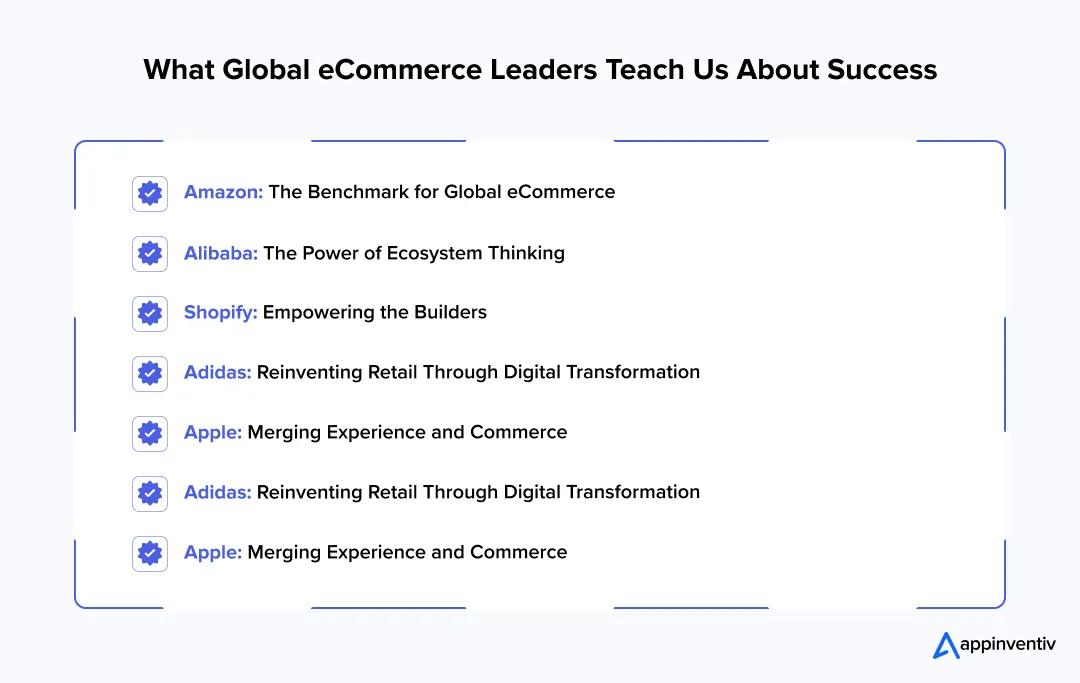
Amazon – The Benchmark for Global eCommerce
Amazon isn’t just an ecommerce company anymore; it’s the marketplace that defines the standard. From one-day delivery to predictive logistics, it shows how far technology can stretch convenience. Its AI-driven product recommendations, dynamic pricing, and vast fulfillment network keep it years ahead of competitors.
What to Learn: Amazon’s success lies in relentless optimization. Every small friction point like delivery, checkout or search is treated as a solvable problem. For startups, the takeaway is simple: master efficiency before expansion. Build trust through speed, transparency, and consistency, and let your technology handle scale.
Alibaba – The Power of Ecosystem Thinking
Alibaba turned from a small B2B directory into one of the world’s largest ecommerce networks, spanning B2C (Tmall), C2C (Taobao), and payments (Alipay). Its strength lies in its ecosystem approach, connecting buyers, sellers, manufacturers, and financial systems on a single platform.
What to Learn: Don’t just sell but build an ecosystem. Alibaba teaches that the most profitable ecommerce business ideas often go beyond products. They connect services, data, and logistics in a way that keeps users coming back. Look for gaps around your product where you can add value like payments, after-sales, or partnerships.
Shopify – Empowering the Builders
Shopify didn’t compete with Amazon; it empowered thousands of smaller businesses to do so. Its easy-to-use platform turned ecommerce into something anyone could start. By combining website creation, payment integration, and marketing tools, Shopify became the default choice for online entrepreneurs.
What to Learn: Shopify’s story is about enabling, not owning. For founders, it’s proof that solving pain points for other sellers can be just as profitable as selling goods yourself. If your ecommerce startup idea focuses on tools or SaaS models, design around simplicity and make the tech invisible so the business can shine.
Adidas – Reinventing Retail Through Digital Transformation
Adidas has evolved from a legacy sportswear brand into one of the most successful direct-to-consumer ecommerce stories of the decade. Through its digital-first strategy, personalized shopping experiences, and mobile-focused platforms, Adidas has built a strong online presence that complements its global retail footprint. By leveraging AI for predictive demand planning and data analytics for product recommendations, it created a truly omnichannel experience.
What to Learn: Adidas proves that even traditional brands can reinvent themselves through digital commerce. The lesson here is to merge brand heritage with modern technology — use ecommerce not just to sell, but to connect. When backed by personalization and data-driven design, even established companies can unlock new revenue streams.
Discover how we helped Adidas revamp its digital presence across the globe! The brand was able to witness more than 2 million downloads and over 500k new user base.
Apple – Merging Experience and Commerce
Apple’s ecommerce presence is an extension of its design philosophy: clean, intuitive, and premium. Every online product page feels like an experience and not a catalog. The company integrates physical and digital seamlessly: buy online, pick up in-store, or start a purchase in the app and finish at a retail location.
What to Learn: Apple proves that great ecommerce is all about emotion. The lesson for founders is to treat the buying process as part of the brand. A smooth, thoughtful interface and post-purchase support can elevate your perceived value more than discounts ever will.
Sephora – Winning Through Data and Omnichannel Strategy
Sephora’s ecommerce success comes from merging online convenience with offline touchpoints. Its app uses AI and AR for virtual try-ons, while its loyalty program bridges online and in-store experiences. By combining personalization with community, Sephora has become one of the most innovative retail brands in the beauty industry.
What to Learn: Sephora shows that personalization is now the heart of ecommerce. For modern ecommerce startups, this means integrating AI, machine learning, and customer data into your business early. When users feel understood, they stay longer and buy more often.
Profitability, Scalability, And Differentiation: Your Consideration Playbook
You have ideas for an ecommerce business. Now you need to know if it can make money at scale and still stand out. Let’s look into the concrete moves to grow with the right ecommerce business model while carving a moat.
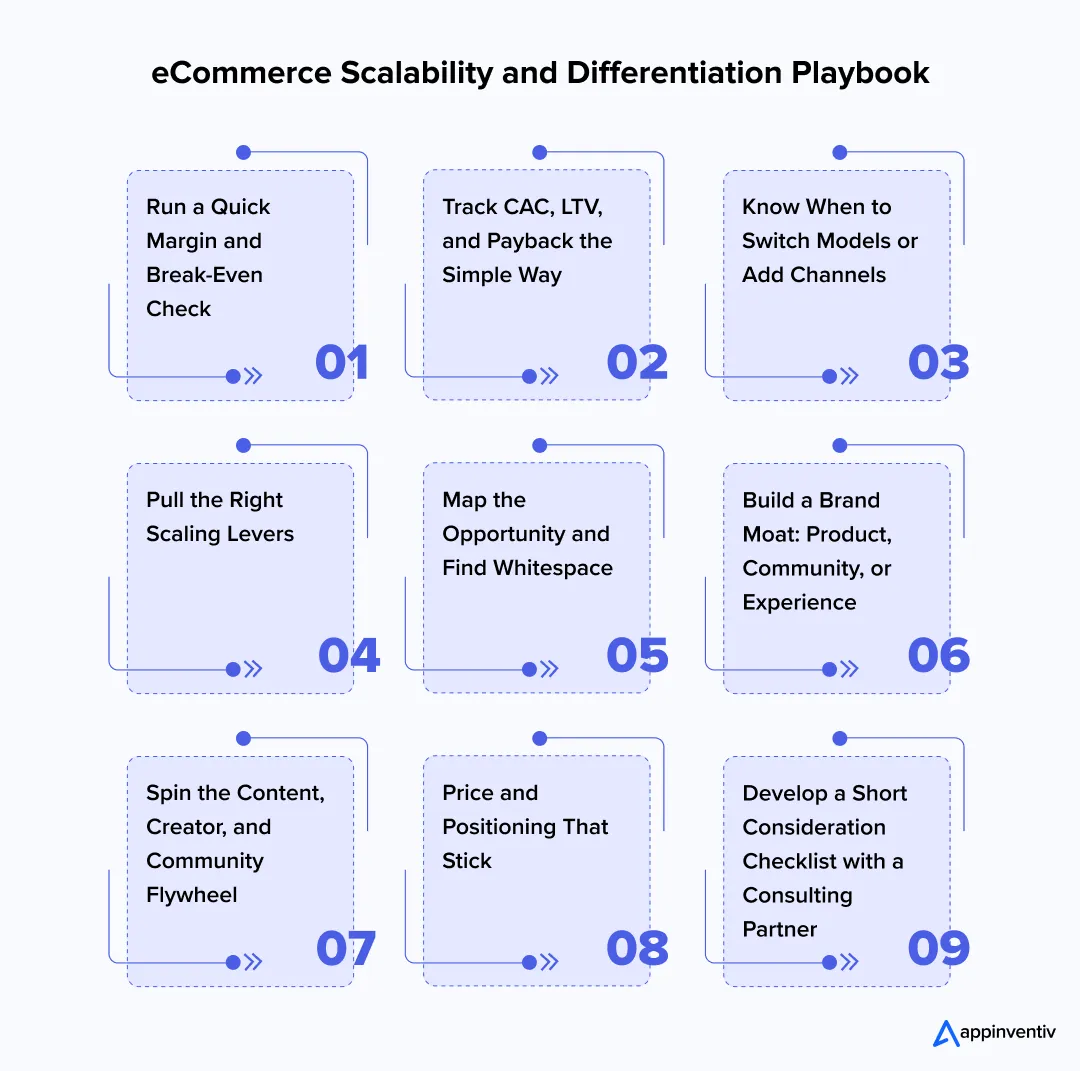
Run A Quick Margin And Break-Even Check
Start with unit math before ad spend.
- Contribution margin = price minus variable cost.
- Contribution margin rate = contribution margin divided by price.
- Break-even units = fixed costs divided by contribution margin.
- Payback period = customer acquisition cost divided by monthly gross profit per customer.
Targets to aim for on most online stores:
- Contribution margin rate above 50 percent for low-ticket fast movers, above 60 percent for mid-ticket, above 70 percent for high-ticket.
- Return rate below 10 percent for hard goods, below 5 percent for consumables.
If the math is tight, improve product cost, raise price with a value add, or remove one variable cost line item.
Track CAC, LTV, And Payback The Simple Way
Keep the scoreboard short.
- CAC is the total marketing and sales cost to win one customer.
- LTV is gross profit from that customer across all orders.
- A healthy store keeps LTV to CAC at 3 to 1 or higher.
- Payback inside 3 months for most direct to consumer, inside 1 to 2 months for subscriptions, inside 6 to 9 months for high-ticket.
Lower CAC with creative testing, better landing pages, and email capture. Lift LTV with bundles, refills, and targeted cross-sell.
Know When To Switch Models Or Add Channels
Watch the signals, then move.
- Dropship to owned inventory when stock-outs, long delivery times, or low review scores cap growth.
- Marketplace first to owned site when fees eat margin or you want first-party data.
- Add wholesale or B2B when repeat rate is high and average order value can jump with case packs.
Hard signals that force the decision:
- Paid media return stalls for 4 to 6 weeks despite creative rotation.
- Inventory turns are below plan or cash is locked in slow SKUs.
- Return rate climbs above target due to fit or expectation gaps.
Pull The Right Scaling Levers
Pick the levers that match your ecommerce business model.
- Subscriptions for consumables and refills.
- Bundles to lift average order value without raising CAC.
- Cross-sell after checkout and in post-purchase email.
- International where shipping cost and duties keep margin intact.
- Partnerships with creators and category communities that already trust a voice.
- Loyalty and referrals to convert happy buyers into a steady pipeline.
Map The Opportunity And Find Whitespace
Do a short opportunity scan before heavy spend.
- Search data shows demand and language your buyers use.
- Review mining shows why shoppers switch or return.
- Category pages on marketplaces show price bands and gaps.
- Social comments show triggers that push a purchase.
Capture one unserved need and build your message around that single edge.
Build A Brand Moat: Product, Community, Or Experience
Pick one primary moat and make it obvious.
- Product moat: a formula, fit, material, or data-backed result that others cannot copy fast.
- Community moat: groups, challenges, or membership with real benefits and a voice buyers want to join.
- Experience moat: fast shipping, easy returns, sizing help, live chat that resolves in minutes.
Your moat should show up in the first screen of your store and in every ad.
Spin The Content, Creator, And Community Flywheel
Let proof do the talking.
- Content that answers real questions, not slogans.
- Creators who already use the product and can show it in context.
- Community prompts like build-along posts, before and after threads, or monthly challenges.
User videos, reviews, and how-to posts lower CAC and raise conversion without sounding like ads.
Price And Positioning That Stick
Make the price feel clear and fair.
- Set an anchor price with a clear reason, then add a value ladder with good, better, best.
- Keep one hero bundle that beats piecemeal buying by at least 10 percent.
- Use a simple guarantee to remove risk for first-time buyers.
- Test price moves in email first, then roll out in ads.
A Short Consideration Checklist With A Consulting Partner
If you want speed without guesswork, a consulting and development partner can help you move from idea to working store with fewer wrong turns.
- Unit economics audit and pricing tests before code is written.
- Store setup with fast pages, clean checkout, and analytics that track CAC, LTV, and payback.
- Data layer for email, SMS, and paid media so your cross-sell and upsell flow works from day one.
- Personalization and search that use real customer behavior, not generic rules.
- International and marketplace playbooks when it is time to add channels.
Why Appinventiv is the Ideal Partner for Your eCommerce Dreams
We hope this blog has given you valuable insights into selecting one of the best eCommerce business ideas for 2026. To turn those innovative ideas in eCommerce into a reality, partnering with a development firm like Appinventiv could be your next best step. Here’s why choosing us as your eCommerce mobile app development company could be the game-changer for your eCommerce business vision:
Innovative Approach: At Appinventiv, we don’t just build apps for your business; we innovate your dreams. We think outside the box to create eCommerce solutions that meet market needs and set new trends.
Customized for You: Your eCommerce entrepreneurship ideas are unique, and the app that converts them into reality should be, too. We specialize in creating custom solutions tailored to the specific demands of your market and business goals, ensuring that your eCommerce app stands out from the competition.
Future-Ready Technology: We leverage the latest technologies and advanced analytics to build apps that are ready for today and scalable for tomorrow. Whether integrating AI for personalized shopping experiences or utilizing blockchain for secure transactions, we ensure your app is ready to surpass the competitors.
End-to-End Support: From ideation to launch and beyond, we are with you every step of the way. We provide comprehensive support and maintenance post-launch to ensure your app operates smoothly and continues to engage users.
Proven Track Record: With a portfolio of successful projects across various industries, our experience speaks for itself. We have helped numerous businesses achieve digital transformation goals, driving growth and innovation. Take 6th Street, for instance, we helped their team cut app loading time down to just three seconds and redesigned the entire shopping experience. That upgrade alone attracted over 3 million iOS and 1 million Android downloads, turning smoother performance into measurable growth.
Then there’s Edamama, a full-scale ecommerce platform built for mothers and their babies. We worked closely with the founders to shape everything, from design to delivery tracking, helping the brand raise $5 million in funding, list more than 20,000 products, and serve over 100,000 mothers. It’s the kind of result that happens when technology is built around real users, not just features.
Customer-Centric Designs: We prioritize user experience in every app we develop, ensuring that your app is intuitive, engaging, and easy to navigate. Focusing on the user, we help maximize customer satisfaction and retention rates.
Get in touch with us to partner with a firm committed to turning your eCommerce vision into a successful reality, focusing on innovation, customization, and cutting-edge technology. If you have ideas for an eCommerce business, we are just a conversation away.
FAQs
Q. What eCommerce business is most profitable for entrepreneurs in 2026?
A. The profitability of choosing eCommerce for business can vary widely depending on the niche, market demand, and operational efficiency. The “best” idea is the one you can source well, explain clearly, and deliver on time. Look for repeat buys or accessories you can bundle. Categories like health and wellness, pet care, and niche subscription boxes work when you bring a real angle. If you already know an audience deeply, build there first.
Q. How much does it cost to start an eCommerce business?
A. After businesses have finalized the type of eCommerce venture they wish to undertake, the next critical step is to partner with a reliable eCommerce app development company that can turn your vision into reality. Developing a custom eCommerce app or software tailored to your business needs typically ranges from $40,000 to $300,000.
This cost variation of converting your eCommerce business ideas into a working website or an app depends on several factors, including the app’s complexity, the number of features required, integration with existing systems, and the level of customization needed. Selecting the right development partner is essential to ensure that the final product effectively meets your business requirements and customer expectations, ultimately contributing to the success of your eCommerce business.
Q. How to start an ecommerce business?
A. Start small. Don’t think of a giant online store yet but think of one idea that actually solves something. Maybe you’ve seen people struggle to find a good eco-friendly bag or a protein brand that feels trustworthy. That’s your start point.
Check if people are already buying what you want to sell. Type it into Google, scroll through Amazon reviews, read a few Reddit threads. You’ll quickly see what people complain about and what they love. That alone can shape your first product.
Next, pick a simple platform like Shopify, WooCommerce, or whatever feels least intimidating. Get your store live even if it looks basic. Use your own photos, write in your voice, and keep the “About” section real. Add one thing that shows trust like a return policy, reviews, or even a short thank-you note in the parcel.
At the start, talk to your buyers yourself. When ten people order, ask them what made them click “buy.” When someone returns an item, ask why. Those conversations will tell you more than analytics ever will.
Once it feels steady, bring in small tools – an email signup, a WhatsApp update list, maybe a simple blog sharing how you run things. If you’re not tech-savvy or just want a cleaner setup, partner with an ecommerce development company like Appinventiv. We can handle design, payments, and integrations while you focus on what matters, building a store people remember and come back to.
Q. What are the advantages of starting an eCommerce business?
A. If you wish to launch top ecommerce business idea, here are the several advantages you need to know:
- Global Market Access: Sell products to customers worldwide without geographic limitations.
- Reduced Overhead Costs: Lower expenses compared to physical stores by eliminating the need for retail space.
- 24/7 Operations: Ability to make sales and generate revenue around the clock.
- Scalability: Easily expand product lines or enter new markets.
- Data-Driven Insights: Utilize customer data to optimize marketing and sales strategies.
- Customized Shopping Experiences: Offer personalized recommendations and promotions based on user behavior.


- In just 2 mins you will get a response
- Your idea is 100% protected by our Non Disclosure Agreement.
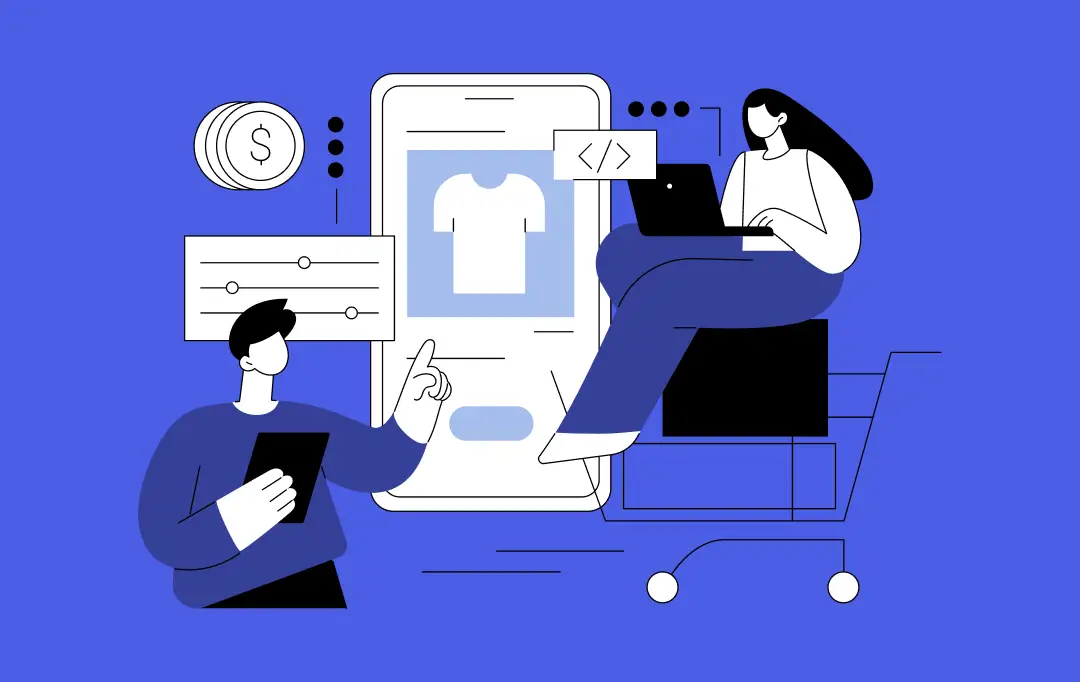
How Much Does It Cost to Develop an eCommerce Platform like The Iconic in Australia?
Key takeaways: Building an eCommerce platform like The Iconic in Australia can cost anywhere from AUD $46,500 to AUD $775,000+ depending on scale and sophistication. The real eCommerce cost drivers are backend architecture, integrations, compliance, and system reliability, not just design screens. Platforms like The Iconic succeed because they combine shopping experience, logistics, and payments…

Key takeaways: Global eCommerce fraud losses are expected to exceed $107 billion by 2029. Digital growth, Buy Now Pay Later features, and rising automation are all opening up new avenues for fraudsters to exploit. First-party abuse and refund abuse have ended up being the greatest source of pain globally, affecting nearly half of all online…

Top 20+ Profitable Ecommerce Business Ideas In Australia in 2026
Key takeaways: Australia’s eCommerce surge isn’t just about numbers, it’s about mindset. Consumers expect personalization, speed, and sustainability as standard, not extras. The best business ideas address a genuine problem. From pet care to sustainable fashion, the niches winning in 2026 will be the ones that understand specific customer pain points. Technology is the quiet…








